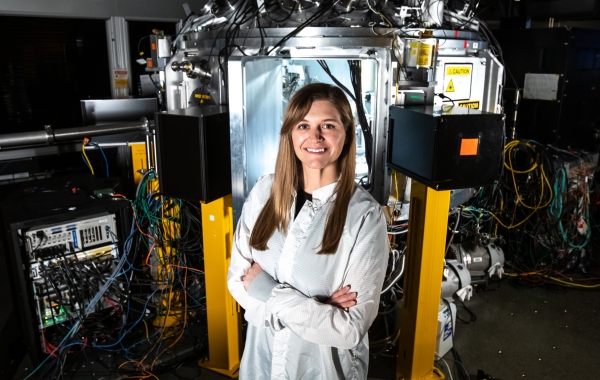U of A laser experts join global network increasing access to technology that could revolutionize everything from space physics and nano-scale manufacturing to clean energy and cancer treatment.
A beam of protons painlessly penetrates human tissue until it terminates inside a cancer tumour, where each particle deposits a micro-explosion of radiation energy. The beam is precisely calibrated, targeting only the tumour and leaving surrounding tissue unharmed.
Called “proton therapy,” this revolutionary medical treatment is just one application of a relatively new technology using high-power lasers.
Accelerating particles to nearly the speed of light, these lasers are also used to test pharmaceuticals, peer into materials on the nano-scale to gauge how they hold up under stress, or see what matter looks like in a supernova explosion or near a black hole.
Read more at University of Alberta
Image: As co-ordinator of the LaserNetUS network, Chandra Breanne Curry is making high-power laser facilities accessible to researchers worldwide. “We’re really trying to bring a global community of scientists together to solve a range of big problems.” (Photo: Jacqueline Orrell, SLAC National Accelerator Laboratory)


